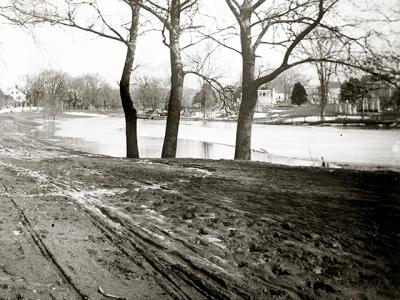The Mast-Head: Buried in the Road

In the early days of the East Hampton settlement, then known as Maidstone, no fence surrounded the South End Burying Ground.
This would not be particularly notable, except that in those days the area on both sides of Town Pond was the main thoroughfare, for people and livestock alike. David Gardiner, who had lived nearby and reflected on this in 1840, found it odd that over the years the graves had been exposed to the intrusions of cattle and to depredations of all kinds, as he put it.
Gardiner published his “Chronicles of the Town of Easthampton” in 1840 in The Sag Harbor Corrector, and the series was assembled into a small book in 1871. The book was reprinted in 1973 at Isabel Gardiner Mairs, one of his descendant’s, expense. Copies of that edition are free for the asking at the Amagansett Library, Nellie’s, an Amagansett antiques shop, and we have a few copies here at The Star office.
That the burying ground was actually in the public highway interested Gardiner greatly, and got him to speculating that it could have been explained as the product of the early residents’ stern religious views.
“What the object could have been in thus locating it, at a time when land was of little value and all equally accessible can only be conjectured,” he wrote.
“Burial grounds are considered holy by the Romish church, and the zeal and bigotry of that day was so intolerant of all papal customs, that the puritans were generally disposed to adopt the reverse of what they considered the superstitions of that church.” Burying their dead in the road, Gardiner supposed, might have been intended as a show of contempt for popish rituals.
At some point before 1840, when Gardiner’s account of the early days appeared in The Corrector, the town trustees had decided enough was enough and that the cattle that came to Town Pond to drink or that were being driven past it on their way to the meadows on Montauk were no longer welcome among the graves.
Today, a picket fence surrounds the burying ground with wooden steps at either end, which you have to climb to visit the graves. Small signs indicate that dogs are now not welcome. The cattle that do pass by do so aboard trucks.
